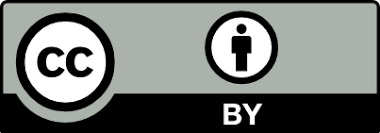Revealing Adolescent Drug Trafficking and Addiction:
Exploring School Disciplinary and Drug Issues in the Federal
Territory of Kuala Lumpur and Selangor, Malaysia
Jubit, N.,1 Masron, T.,2* Redzuan, M. S.,2 Ahmad, A.2 and Yoshinari, K.3
1Borneo Institute for Indigenous Studies (BorIIS),
University of Malaysia Sabah, UMS Road, 88400, Kota Kinabalu, Sabah, Malaysia
2Centre for Spatially Integrated Digital Humanities (CSIDH),
Faculty of Social Science and Humanities,
University of Malaysia Sarawak, 94300, Kota Samarahan, Kuching,
Sarawak, Malaysia

3Institute of Literature and Human Sciences, Graduate School
of Literature and Human Sciences Department of Human Behavioral Sciences, Osaka Metropolitan University, Japan
*Corresponding Author
Abstract
Previous studies have predominantly concentrated on drug trafficking
and addiction amongst adults, with a relative dearth of research
specifically dedicated to adolescents. However, it is crucial to
recognise that drug-related issues amongst adolescents necessitate
unique attention and understanding. This study sets out to identify
high clusters of drug trafficking and addiction in Kuala Lumpur and
Selangor, and scrutinise their relationship with schools that have
disciplinary and drug-related issues. By analysing the data, the
study seeks to comprehend the correlation between these high
clusters and the presence of disciplinary problems and drug issues
within schools in the region. Local Indicator Spatial
Autocorrelation was utilised in this study to identify the patterns
of adolescent drug trafficking and addiction in Kuala Lumpur and
Selangor. The Local Indicator Spatial Autocorrelation analysis
(LISA) from 2015 to 2020 disclosed consistent high-high clusters of
adolescent drug trafficking and addiction in Pantai, Ampang,
Jinjang, Tun H. S. Lee, Pudu, and Cheras areas. These clusters
indicate a concentrated prevalence of drug-related activities
amongst adolescents aged 17 years old and below. Secondary School of
SMK Sri Pantai in Pantai faces disciplinary challenges related to
drug issues, underscoring the importance of providing support for a
safe learning environment. In contrast, SMK Bandar Ampang has
managed to maintain a drug-free environment despite being in a
high-high cluster area. SMK Dato Ibrahim Yaacob in Jinjang, along
with SMK Dato Onn, Tun H. S. Lee, Cheras, and SMK Cochrane Perkesa,
are closely associated with drug issues amongst adolescents. Schools
grappling with discipline issues and drug-related problems are
notably affected by their geographical locations. It's worth
mentioning that a majority of these institutions are positioned in
areas with a high concentration of drug trafficking and addiction,
amongst adolescents (17 years old or younger). These findings
emphasise the need for preventive measures and support to ensure
student well-being and safety.
Keywords: Adolescent, Drug Trafficking, Addiction,
School, Lisa
1. Introduction
The National Anti-Drug Agency reported that an adolescent between the
ages of 15 and 25 who tested positive in a urine drug test was
apprehended at a bar or karaoke pub in Kuala Lumpur [1]. The increasing
concern of drug addiction among adolescents is alarming, as some start
getting involved in drugs as early as 9 years old. It is unfortunate
that children at such a young age may not fully realise the impact that
drug use can have on their lives. Children and the new generation are
crucial assets and play a vital role in the development of countries for
the future [2]. Most of the time, drug users engage in their activities
in flats, vacant houses, and playgrounds, which serve as locations for
drug transactions. These places become hubs for the sale and purchase
of drugs [3].
In the year 2019, the enrolment rates for adolescents in secondary and
higher education were reported as 86.99% for girls and 80.70% for boys
[4]. The prevalence of harmful drug use seems to be on the rise among
teenagers. According to the 2017 National Health and Morbidity Survey,
there was a reported increase in adolescent drug usage, with 3.4%
admitting to current drug use (defined as the consumption of substances
such as heroin, morphine, glue, amphetamine, or methamphetamines,
marijuana) in 2014, a rise from 1.5% in 2012. Alarmingly, one out of
every 25 secondary school students confessed to having experimented with
drugs at some point. Even more distressing is the fact that seven
percent of these students began using drugs at the tender age of seven
or even younger [5]. In Malaysia, a total of 106,000 adolescents have
reported using drugs at least once in their lifetime, while 60,000
adolescents are currently engaged in drug use. It is concerning to note
that approximately three out of every four drug users in Malaysia
initiated their drug use before the age of 14. According to the data,
2.8% of adolescents have reported ever using inhalants, such as glue or
paint. Additionally, 1.1% have admitted to ever using marijuana, 2.3%
have acknowledged ever using kratom, and 1.0% have disclosed ever using
amphetamines or methamphetamines [6].
Figure 1 shows the sources of obtaining drugs among adolescents.
According to the chart, the majority of adolescents bought drugs from
someone, accounting for 38.4%, while the lowest percentage was through
other means, with only 9.70%. Adolescents, specifically between the ages
of 12 to 14, have been identified as a crucial period when the risk of
substance use initiation is high. However, research indicates that the
risk continues into the later teenage years, particularly between 15 to
17 years old. Furthermore, substance use may reach its peak among young
adults aged 18 to 25 years [7]. The prevalence of cannabis uses among
young people aged 15 to 16 years was 18% in North America and 20% in
Europe, as reported by the United Nations Office on Drugs and Crime
(2018). According to [8], there is a concerning prevalence of tobacco
use among adolescents in Indonesia, Malaysia, Thailand, and the
Philippines, with rates ranging from 11 to 15%. Drug abuse poses a
significant threat to the younger generation as it can lead to
addiction and dependency on harmful substances. The consequences of
drug addiction are severe, and individuals who are addicted may
experience torment and desperation when they cannot satisfy their
cravings. Drug addicts may resort to engaging in criminal acts to
fulfill their addiction and obtain the substances they crave [9].
The involvement of young people in gangs can have a profound impact on
their lives, leading to a disruption of other life opportunities and
potential negative outcomes. When young individuals become connected to
gangs, it can significantly alter their lives, potentially resulting in
school dropouts, exclusion, and increased interactions with individuals
involved in similar activities. The affiliation with gangs can lead
young people to engage in more criminal behaviour, such as drug
dealing, as they become more deeply immersed in the gang lifestyle. The
involvement of young individuals in gangs can have a detrimental effect
on their future prospects, limiting their access to education,
employment, and other positive life opportunities [10].
A majority of 16 to 17-year-old students in upper secondary school
exhibiting risky behaviours, such as involvement in violence, drug use,
smoking, exposure to sexual activities, occasional loneliness, and
instances of self-harm attempts [11]. In a study conducted by the
Criminal Legal Investigation Department involving interviews with
police officers, it was found that student involvement in social
issues, criminal acts, and school dropouts has consequences for the
Malaysian government.
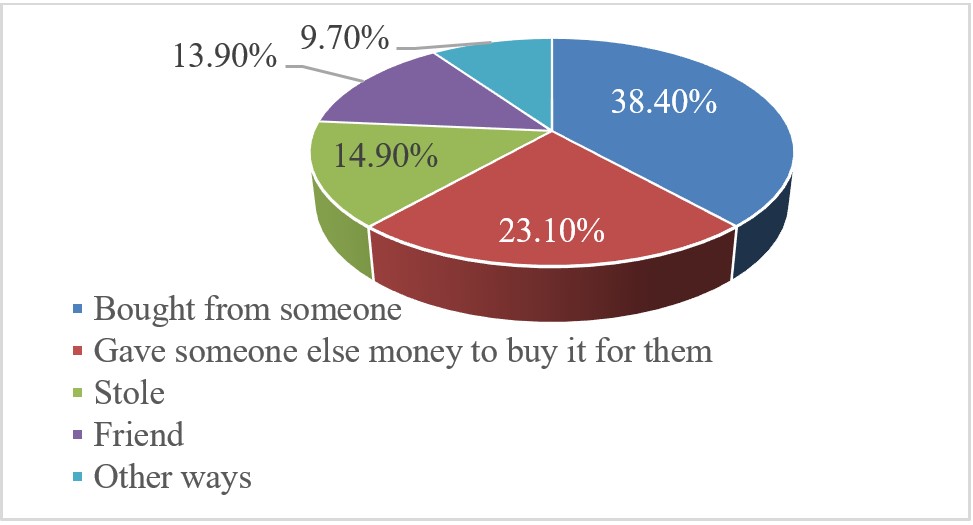
Figure 1: Sources to get drug among adolescents in
Malaysia, 2022 [6]
Specifically, these issues can lead to increased costs for the
government in terms of supporting at-risk adolescents and constructing
rehabilitation centres [12]. According to a report by New Wisdom,
individuals in Uganda who drop out of school between the ages of 16 and
early adulthood are found to have a higher likelihood of engaging in
substance use, including cigarettes, alcohol, marijuana, and illegal
drugs [13]. Previous study [13] study focused on the social
determinants of drug abuse among youth aged between 19 to 39 years old
who were receiving treatment at the Serendah's Rehabilitation Centre.
The study's findings revealed three key factors that contribute to the
involvement of youth in drug abuse: the influence of the family
environment, the impact of peers, and the influence of the
neighbourhood. However, this study did not identify the specific
hotspots of drug use among youth aged between 19 to 29 years old and
failed to consider the prevalence of drug abuse within specific
locations and populations. It is crucial for studies on drug abuse and
drug dealers to take into account the geographical areas where drug use
is most prevalent and to understand the specific populations affected.
The population of adolescents in Malaysia is estimated to be 5.5
million. However, the proportion of adolescents aged 10 to 19 as a
percentage of the overall population has steadily declined over the past
50 years. This decline can be attributed to factors such as an aging
population, rising life expectancy, and a decrease in fertility. The
most common offences for which adolescents tend to be arrested in
Malaysia include drug offences such as drug consumption, possession,
and trafficking, as well as property offences such as theft, burglary,
and robbery. Drug-related offences accounted for approximately 7% of
arrests involving adolescents aged 0 to 18 in 2017. This suggests that
there is a significant number of adolescents involved in drug-related
activities, which is a concerning issue that requires attention and
intervention. Additionally, property-related offences represented
approximately 30% of adolescent arrests. This indicates that a
considerable proportion of adolescent arrests are related to property
crime [14].
This study is different from previous studies as it focuses on a
younger age group, specifically 17 years old and below. Therefore, this
study identifies the hotspots of drug use among youth aged 17 years old
and below and considers the prevalence of drug abuse within specific
police station boundaries and populations. The hypothesis of this study
is a local measure of similarity between each area's value and those of
nearby areas. This will provide a more nuanced understanding of the
issue and enable policymakers, healthcare professionals, and community
organizations to develop targeted interventions and allocate resources
where they are most needed.
According to statistics from the Ministry of Education, the student
dropout rate in the state of Selangor has shown an increasing trend
from 2020 to 2022. The dropout rate at the primary level increased from
zero dropout in 2020 to 0.10% in 2022. At the secondary level, the
dropout rate also increased from zero dropout in 2020 to 0.61% in 2022
[15]. The issue of student dropout can potentially lead to a high
unemployment rate, an increase in juvenile delinquency, and a rise in
the influx of foreign nationals in both professional and
non-professional sectors [16]. This study aims to address the research
gap, as previous studies have not identified the clusters of drug
trafficking and addiction among adolescents within school hotspots,
using police station boundaries. This study is crucial for several
reasons. Firstly, it helps to understand the patterns of drug
trafficking and addiction among adolescents, particularly within school
zones. This knowledge can lead to more effective prevention and
intervention strategies. Secondly, by using police station boundaries
for the identification of these clusters, it provides a new perspective
and a more localized approach to tackling this issue. Lastly, it
addresses a research gap, contributing to the broader understanding of
drug-related issues among adolescents, which can inform policy and
practice in education, law enforcement, and public health sectors. Thus,
this study identifies high clusters of drug trafficking and addiction in
Kuala Lumpur and Selangor and examines their relationship with schools
that have disciplinary and drug-related issues among adolescents.
2. Methodology
This study utilises police station boundaries as the unit of analysis,
specifically focusing on 22 police station boundaries in Kuala Lumpur
and 88 police station boundaries in Selangor. To create a shapefile for
police station boundaries, using ArcMap 10.7.1, first of all open
ArcMap and access the catalog window. This can be done by clicking on
the catalog button in the ArcMap toolbar or by selecting “Catalog” from
the Windows menu. In the Catalog window, navigate to the location where
you want to create the shapefile. Right-click on the folder or
geodatabase where we want to store the shapefile and select "New" =>
"Shapefile". In the "Create New Shapefile" dialog box, specify the name
of the shapefile and choose "Polygon" as the feature type. Click "Edit"
next to the "Coordinate System" field.
In the "Spatial Reference Properties" dialog box, we can choose a
predefined coordinate system by navigating through the folders in the
left pane or by searching for a specific coordinate system using the
search bar. After find the desired coordinate system, select it and
click "OK". Back in the "Create New Shapefile" dialog box, click "OK"
to create the shapefile with the specified name and coordinate system.
After the shapefile is created, we can start digitizing the police
station boundaries. Go to the Editor toolbar and click on the "Editor"
dropdown menu. Select "Start Editing" to activate the editing mode. In
the Editor toolbar, click on the "Editor" dropdown menu again and
select "Create Features". Choose the shapefile created earlier from the
list of available layers. With the shapefile selected as the target
layer, click on the "Polygon" construction tool in the Editor toolbar.
This tool allows us to create polygon features by clicking on the map
to define the vertices. Begin digitizing the police station boundaries
by clicking on the map to create the vertices of the polygon. Continue
clicking to add more vertices until the entire boundary done.
Double-click to finish the polygon. Repeat the digitizing process for
each police station boundary that we want to create. Once we have
finished digitizing, save edits by clicking on the "Editor" dropdown
menu and selecting "Save Edits" or "Save Edits and Stop Editing" if we
are done editing.
The data used in this study pertains to drug trafficking and addiction
among adolescents aged 17 and below, and it was obtained from the Royal
Malaysia Police at Bukit Aman. Additionally, this study incorporates
schools that have been identified as hotspots for disciplinary and
drug-related issues. By examining the intersection between police
station boundaries, drug-related data, and problematic schools, this
study aims to provide valuable insights into the dynamics of drug
issues among adolescents within the police stations of Kuala Lumpur and
Selangor from 2015 to 2020.
2.1 Local Indicator Spatial Autocorrelation (LISA)
Analysis
LISA identified significantly hotspots, cold spots, and spatial
outliers based on a set of weighted features. By analysing the spatial
patterns and relationships among these features, the study aims to
uncover areas that exhibit significant clustering or deviation from the
expected spatial distribution. This approach provides valuable insights
into the spatial dynamics of the analysed features, allowing for a
deeper understanding of the underlying patterns and potential areas of
concern. The z-scores and p-values provide measures of statistical
significance, indicating whether to reject the null hypothesis on a
feature-by-feature basis. They assess if the observed spatial clustering
(either high or low values) or dissimilarity (a spatial outlier) is more
pronounced than expected in a random distribution [17]. A high positive
z-score suggests that surrounding features exhibit similar values
(either high or low). The Cluster/Outlier type (COType) field in the
Output Feature Class will be HH for a statistically significant cluster
of high values and LL for a statistically significant cluster of low
values. A low negative z-score (e.g., less than -3.96) indicates a
statistically significant spatial data outlier. The COType field in the
Output Feature Class indicates if the feature has a high value
surrounded by low values (HL) or if the feature has a low value
surrounded by high values (LH) [17]. LISA helps to identify locations
with its neighbour as a high-high cluster, low-low cluster, high-low
cluster, and low-high cluster [18]. Previous research, such as [19],
used LISA to determine the hotspots of vehicle theft with statistical
significance in Kuching, Sarawak. The past studies have chosen LISA as
it is a powerful analytical tool for identifying spatial patterns and
relationships among a set of weighted features. Lisa utilizes z-scores
and p-values to measures the statistical significance of the observed
spatial clustering or dissimilarity. The others research also using
both global and local Moran’s I measures of spatial association to
identify drug dealing hotspots in Mexico City. The analysis also to
understand the presence of spatial autocorrelation in drug dealing for
sale purposes [20].
Figure 2 shows the spatial distributions of school disciplinary issues
with drug problems in Kuala Lumpur and Selangor. There were 22
secondary schools identified as having disciplinary problems with drug
issues in Kuala Lumpur, such as SMK Sungai Besi, SMK Sri Pantai, SMK
Cochrane Perkasa, SMK Bandar Tun Razak, SMK Cheras, SMK Taman Tun Dr
Ismail, SMK Bandar Tasik Selatan, SMK Seri Permaisuri, SMK Bukit
Bandaraya, SMK Taman Yarl, SMK Taman Alam Damai, SMK Dato Onn, SMK
Yaacob Latif, SMK Seri Bintang Selatan, SMK Seri Sentosa, SMK Dato
Ibrahim Yaacob, SMK Bandar Baru Sentul, SMK Kepong Baru, SMK Batu Muda,
SMK Tinggi Setapak, SMK Taman Sri Rampai, and SMK Danau Kota. All of
these schools in Kuala Lumpur are facing drug issues and raising
concerns among the community. In Selangor, there were eight schools
classified as having disciplinary issues with drug problems, including
SMK Taman Melawati, SMK La Salle PJ, SMK Seri Bedena, SMK Pandan Indah,
SMK Pandan Mewah, SMK Bukit Sentosa, SMK Bandar Baru Batang Kali, SMK
Seri Tanjung, and SMK Rantau Panjang. The map also display the
distributions of police stations location.
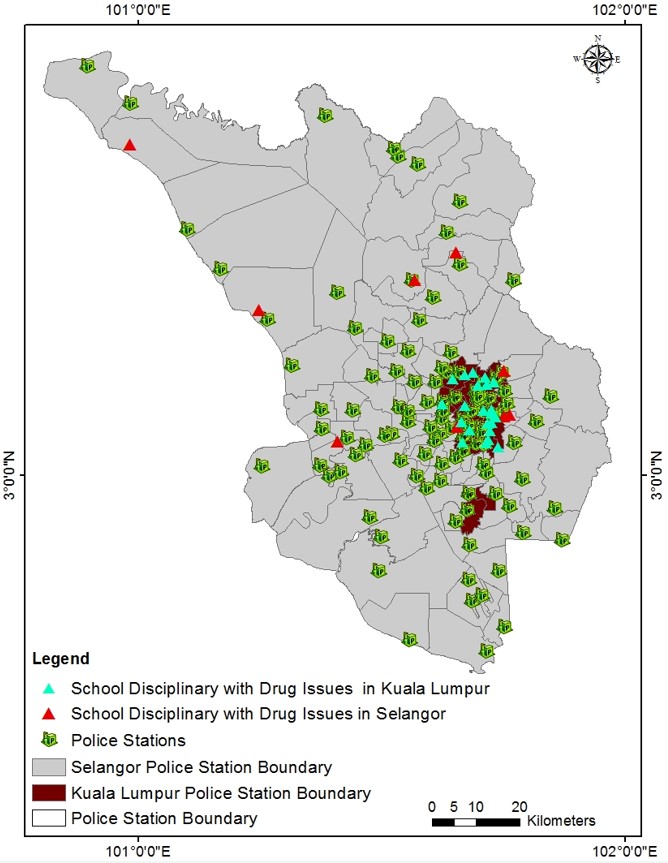
Figure 2: Kuala Lumpur, Selangor, Malaysia
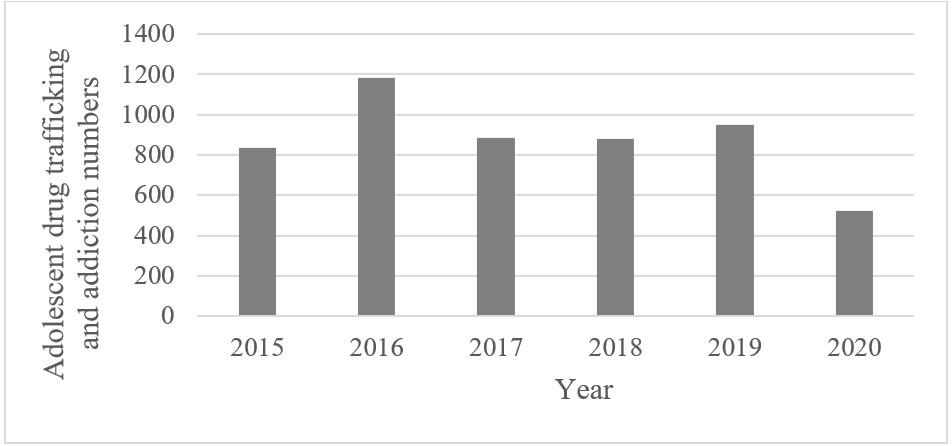
Figure 3: Adolescent drug trafficking
and addiction trend 2015-2020
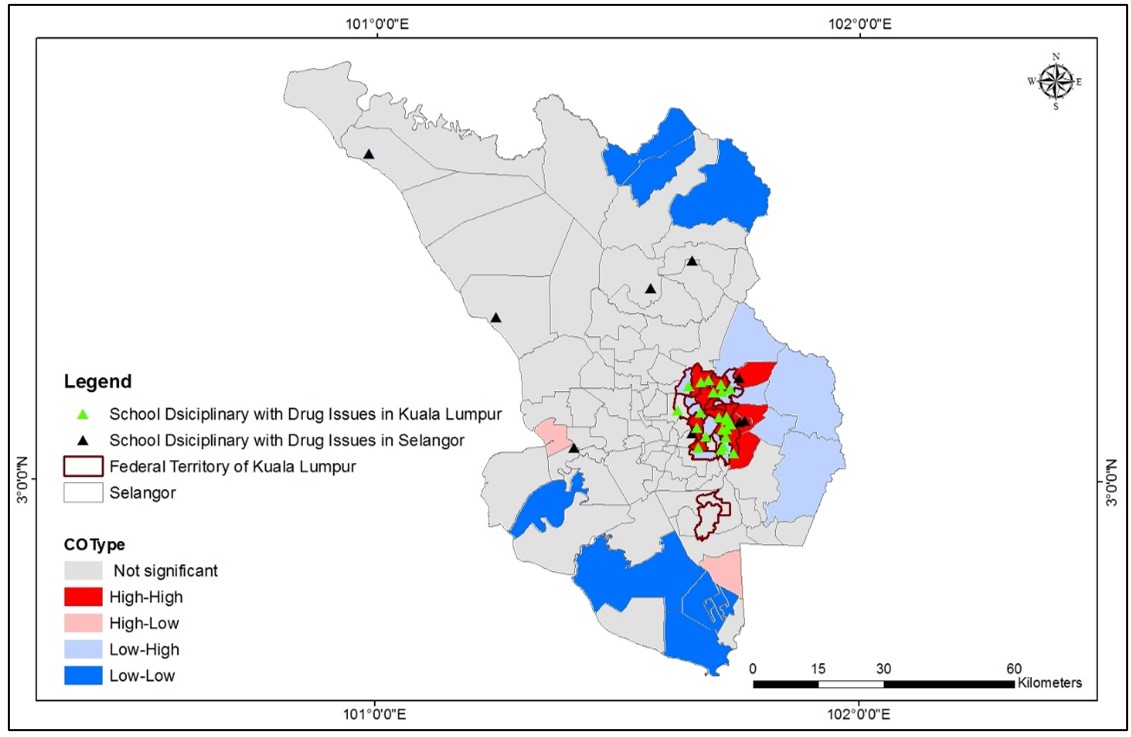
Figure 4: The LISA cluster analysis of adolescent drug
trafficking and addiction in certain areas of Kuala Lumpur and Selangor in 2015
3. Results
According to Figure 3, there was a notable trend in adolescent drug
trafficking and addiction in Kuala Lumpur and Selangor. The data shows
that in 2015, a total of 834 adolescents were reported to be involved
in drug trafficking and addiction. This number increased to 1,181 in
2016. However, there was a decrease in the number of adolescents
involved in 2017 and 2018. In 2019, there was a slight increase with
949 adolescents reported, followed by another decrease in 2020.In
2015, a majority of the high-high cluster was identified in nine areas,
namely Pantai, Serdang, Ampang, Jinjang, Tun H.S Lee, Pandan Indah,
Pudu, Cheras, and Kajang as shown in Figure 4. These areas exhibited a
concentration of high levels of a particular characteristic or
phenomenon, indicating a specific trend or pattern in those locations.
The study also identified five areas classified as low-low clusters of
adolescent trafficking and addiction. These areas include Sungai Pelek,
Pelabuhan Kelang, KLIA2, Ulu Bernam, and Kuala Kubu Bharu. These
locations exhibited consistently low levels of the characteristic or
phenomenon being studied. Furthermore, the remaining 20 areas were
categorised as high-low and low-high areas, indicating random patterns
in terms of adolescent drug trafficking and addiction.
In 2016, the number of areas with a significant high-high cluster of
drug trafficking and addiction among adolescents increased to 14 (Refer
Figure 5) These areas include Pantai, Taman Melawati, Salak Selatan,
Ampang, Jinjang, Sentul, Setapak, Tun H. S Lee, Pandan Indah, Pudu,
Cheras, Petaling, Batu 9, and Dang Wangi. On the other hand, there were
nine areas classified as low-low clusters, namely Aeropolis, Sungai
Pelek, Pandamaran, Banting, KLIA2, KLIA1, Ulu Bernam, Kalumpang, and
Kuala Kubu Bharu.
In 2017, LISA's findings revealed that Salak Selatan, Ampang, Jinjang,
Sentul, Setapak, Tun H.S Lee, Pandan Indah, Pudu, Cheras, Selayang,
Dang Wangi, Sri Petaling, and Kajang were identified as areas with a
high-high cluster of drug trafficking and addiction as shown in Figure
6. On the other hand, there were areas categorized as significantly
low-low, indicating a lower incidence of drug trafficking and
addiction. These areas included Aeropolis, Sungai Pelong, Sungai Pelek,
Kapar, Saujana Utama, Sungai Besar, Jeram, Bandar Baru Salak Tinggi,
Sepang, KLIA 2, and KLIA 1. These areas were identified as having a
relatively lower prevalence of drug-related issues. Additionally, there
were boundaries identified as high-low and low-high, indicating random
patterns of drug trafficking and addiction. These boundaries included
Pantai, Brickfields, Taman Melawawati, Batu 18, Salak Selatan Baru,
Jalan Tun Razak, Sungai Besi, Kepong, Wangsa Maju, Petaling, Taman Tun
Dr.Ismail, Batu 9, Travers, Hulu Kelang, Gombak, Semenyih, Chow Kit,
Sri Hartamas, Bukit Jalil, Batu 14, Kuala Selangor, Banting, and Bukit
Sentosa.
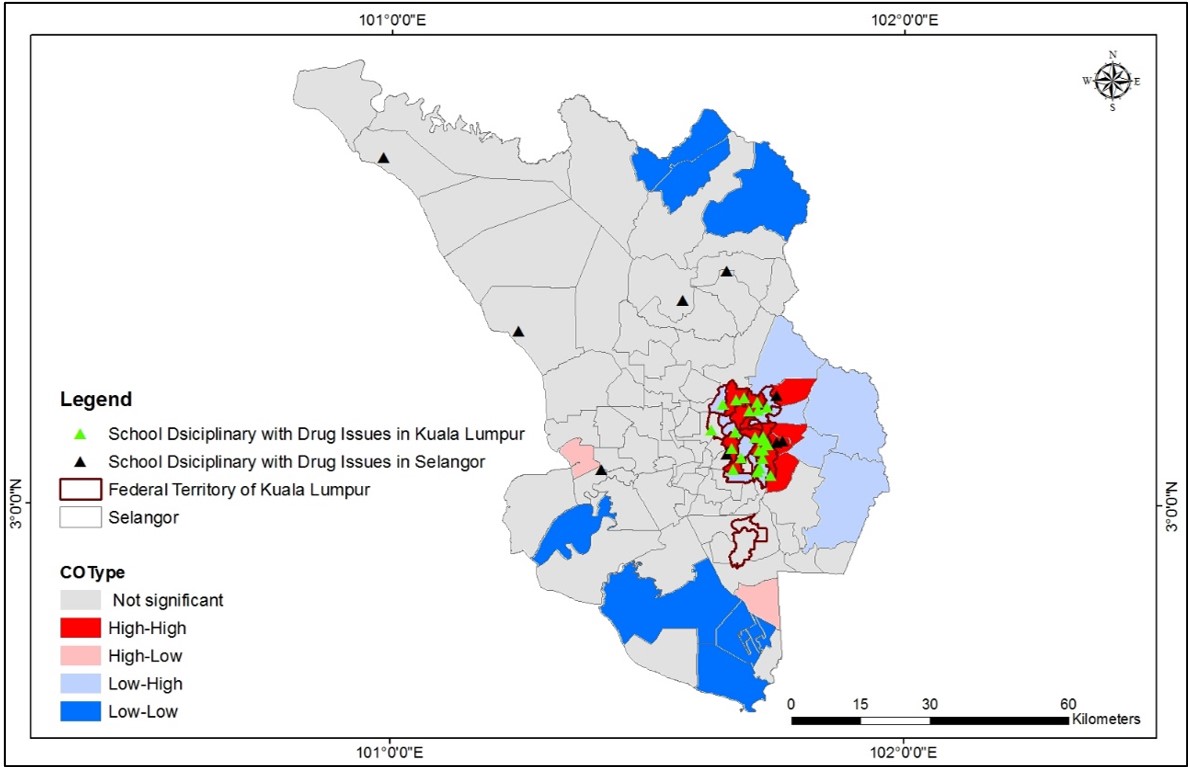
Figure 5: The LISA cluster analysis of adolescent drug
trafficking and addiction in certain areas of Kuala Lumpur and Selangor in 2016
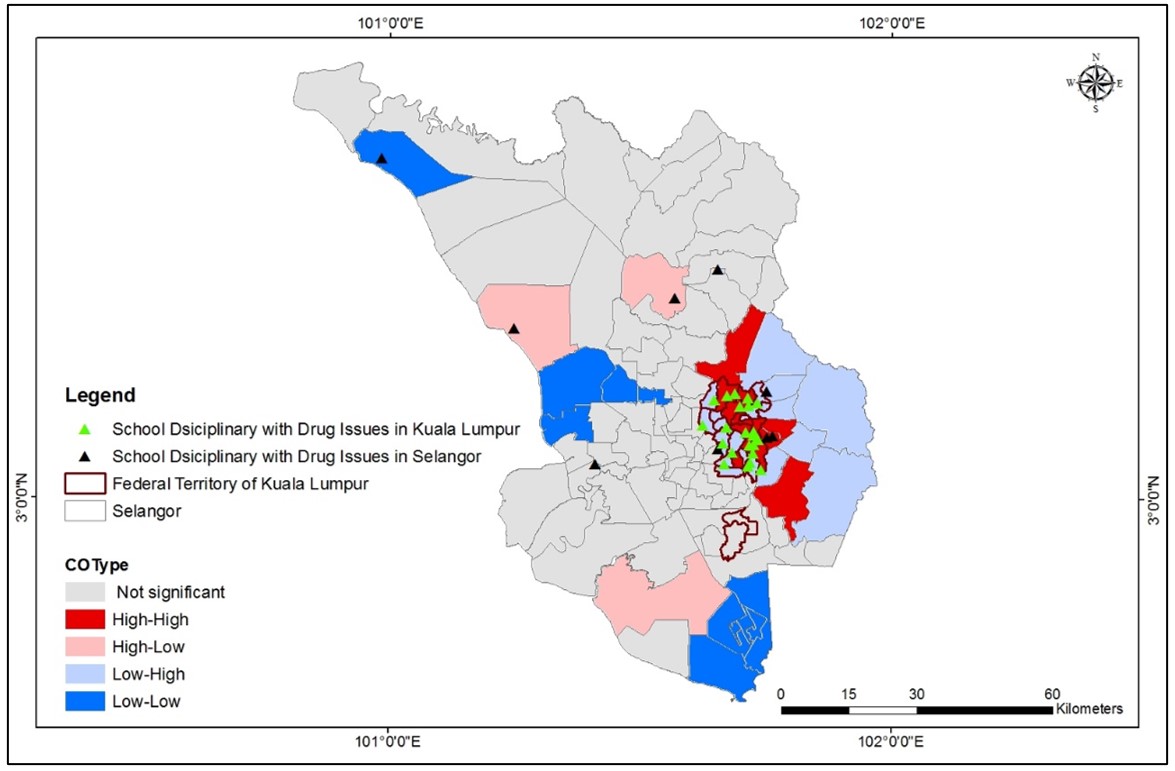
Figure 6: The LISA cluster analysis of adolescent drug
trafficking and addiction in certain areas of Kuala Lumpur and Selangor in 2017
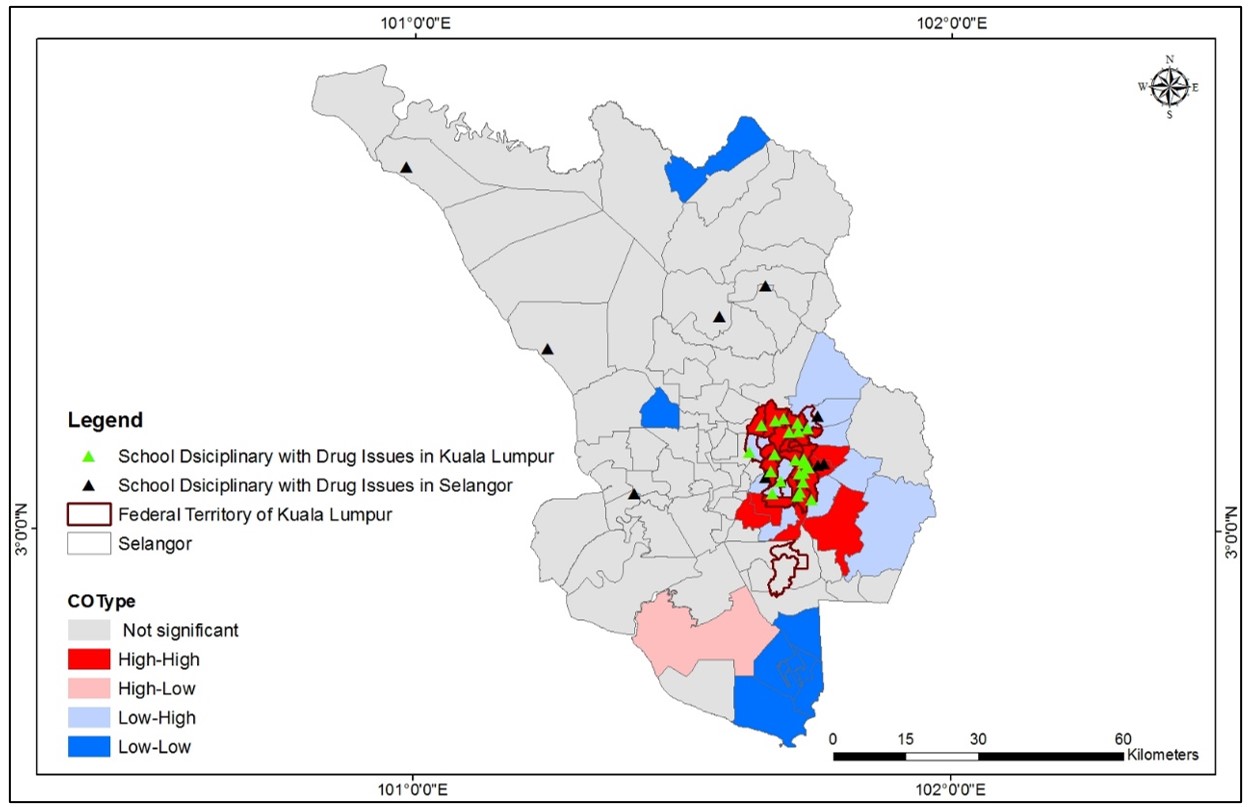
Figure 7: The LISA cluster analysis of adolescent drug
trafficking and addiction in certain areas of Kuala Lumpur and Selangor in 2018
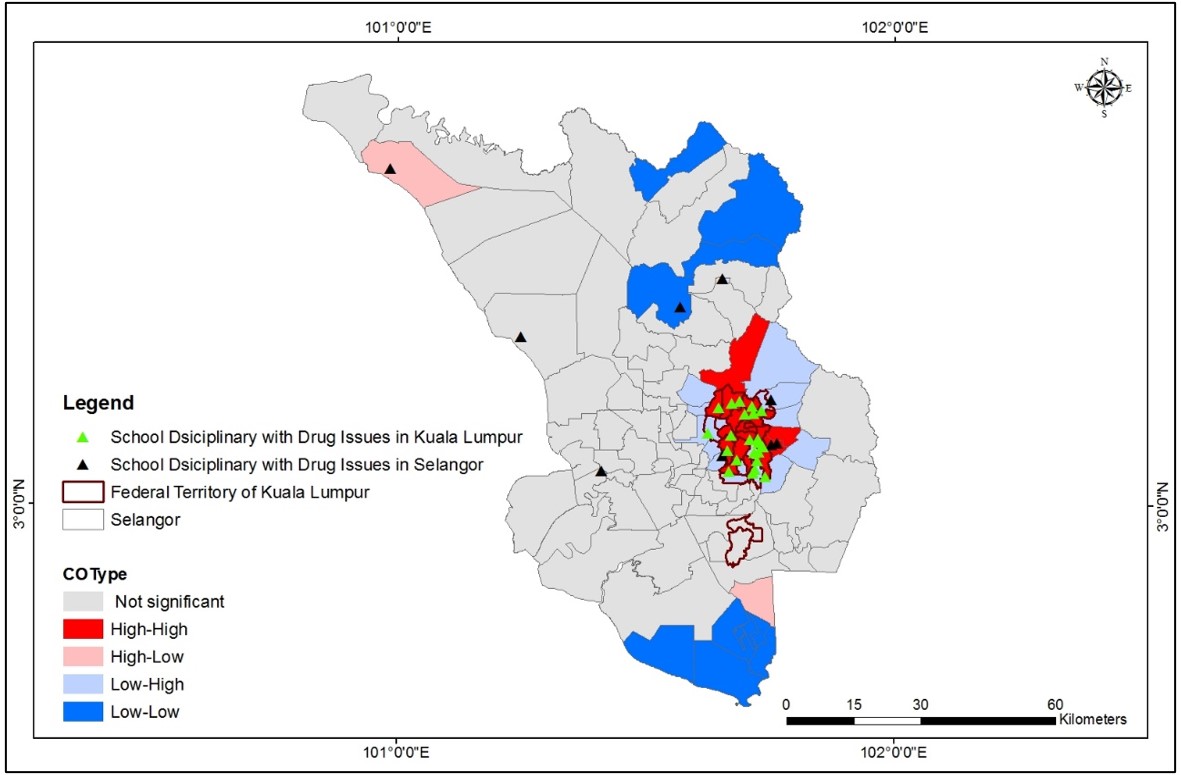
Figure 8: The LISA cluster analysis of adolescent drug
trafficking and addiction in certain areas of Kuala Lumpur and Selangor in 2019

Figure 9: The LISA cluster analysis of adolescent drug
trafficking and addiction in certain areas of Kuala Lumpur and Selangor in 2020
However, in 2018, the number of high-high cluster areas increased to 22,
including Pantai, Serdang, Salak Selatan, Ampang, Salak Selatan Baru,
Bandar Kinrara, Jalan Tun Razak, Sungai Besi, Kepong, Jinjang, Sentul,
Setapak, Tun H.S Lee, Pandan Indah, Pudu, Cheras, Travers, Bandar Puching,
Dang Wangi, Chow Kit, Bukit Jalil, and Kajang (Refer Figure 7). LISA also
revealed that only eight areas were classified as low-low value of
adolescent drug trafficking and addiction which including Aeropolis, Sungai
Pelek, Saujana Utama, Bandar Baru Salak Tinggi, Sepang, KLIA2, KLIA 1 and
Ulu Bernam. Some other areas spotted as high-low and low-high areas which
comprises of Brickfields, Taman Melawati, Petaling Jaya, Wangsa Maju,
Petaling, Taman Tun Dr.Ismail, Batu 9, Seri Kembangan, Hulu Kelang, Gombak,
Semenyih, Sri Petaling, Sri Hartamas and Batu 14.
Moving forward to 2019 as shown in Figure 8, there were 18 areas classified
as high-high clusters for drug trafficking and addiction among adolescents
in Kuala Lumpur and Selangor. The areas with significant low-low value
increases to 10 areas compare to year 2018. These areas including
Aeropolis, Sungai Pelek, Tanjong Sepat, Sepang, KLIA 2, KLIA 1, Bukit
Sentosa, Ulu Bernam, Rasa dan Kuala Kubu Bharu. The spatial patterns of
adolescent drug trafficking and addiction was detected random patterns in
Taman Melawati, Salak Selatan, Petaling Jaya, Sungai Besi, Wangsa Maju,
Taman Tun Dr.Ismail, Sea Park, Batu 9, Damansara, Hulu Kelang, Gombak, Desa
Jaya, Sri Petaling, Sri Hartamas, Bukit Jalil, Sri Damansara, Batu 14,
Sungai Besar and Bandar Baru Salak Tinggi.
However, in 2020 (Figure 9) the number decreased to 15 areas categorised as
high-high clusters. These changes in the distribution of high-high cluster
areas highlight the dynamic nature of the issue and the need for ongoing
efforts to address drug trafficking and addiction among adolescents in the
region. The areas of Cyberjaya, Klia 2, Klia 1, Kalumpang, Kuala Kubu Bharu
and Presint 7 were classified as low-low value which indicating cold spots
areas. However, Taman Melawati, Salak Selatan, Salak Selatan Baru, Jalan
Tun Razak, Sungai Besi, Kepong, Wangsa Maju, Pandan Indah, Taman Tun
Dr.Ismail, Sea Park, Hulu Kelang, Gombak, Desa Jaya, Sri Hartamas, Batu 14
Bandar Baru Salak Tinggi and Bukit Sentosa.
4. Discussion
According to LISA's analysis spanning from 2015 to 2020, it was revealed
that six areas consistently emerged as high-high clusters for adolescent
drug trafficking and addiction. These areas, namely Pantai, Ampang,
Jinjang, Tun H. S. Lee, Pudu, and Cheras, exhibited a concentrated
prevalence of drug-related activities among adolescents aged 17 years and
below. This consistent identification of these areas highlights the urgent
need for targeted interventions and support to address the persistent issue
of drug trafficking and addiction within these communities. Efforts should
be focused on providing resources, education, and prevention programs to
help mitigate the impact on the vulnerable adolescent population in these
specific locations. Adolescent drug trafficking and drug addiction are
concentrated in certain areas and likely near around school disciplinary
with drug issues.
In the area of Pantai, there is a school that has been classified as having
disciplinary problems related to drug issues, known as SMK Sri Pantai. This
particular school has been identified as facing challenges with
drug-related incidents among its student population. Efforts to address
these issues and provide support to the students and the school community
are crucial in ensuring a safe and conducive learning environment for
everyone involved. Collaborative measures involving school authorities,
parents, and relevant stakeholders can play a vital role in tackling the
drug issues and promoting a positive educational experience for the
students of SMK Sri Pantai. Despite Ampang being classified as a high-high
cluster for drug trafficking and drug issues, it's important to note that
SMK Bandar Ampang, a school in the area, has not been involved in drug
problems. Although the school has been classified as having disciplinary
issues, it is commendable that they have managed to maintain a drug-free
environment.
Located in the Jinjang area, SMK Dato Ibrahim Yaacob finds itself in an
area that has been identified as a hotspot for drug trafficking and
addiction among adolescents. The close proximity of the school to this
high-risk environment underscores the importance of implementing preventive
measures and providing support to ensure the well-being and safety of the
students. SMK Dato Onn and Tun H. S. Lee, along with the Cheras area, have
been closely associated with drug issues among adolescents. Additionally,
SMK Cochrane Perkesa is also known to be connected to these drug-related
challenges. Adolescent drug trafficking and drug addiction tend to be highly
concentrated in specific areas, often in close proximity to schools that
have a history of disciplinary issues related to drugs. These areas become
hotspots for drug-related activities among young individuals. The presence
of drug trafficking and addiction in these locations can be attributed to
several factors.
Firstly, schools with a high prevalence of disciplinary cases related to
drugs create an environment where drug use and distribution become
normalized among students. This normalization can lead to an increase in
drug-related activities, including trafficking, as students may feel more
comfortable engaging in such behaviors within their immediate surroundings.
Secondly, the close proximity of these areas to schools provides
convenience for both drug dealers and potential buyers. Students who are
involved in drug trafficking can easily access their target market within
the school community, making it easier for them to distribute drugs
discreetly. Likewise, students who are seeking drugs may find it more
accessible to obtain them from peers within the school environment.
Furthermore, the social dynamics within schools play a significant role in
the concentration of drug trafficking and addiction. Peer influence and
pressure can contribute to the spread of drug-related activities, as
students may be influenced by their peers to experiment with drugs or engage
in drug trafficking. This social network within schools can create a
self-perpetuating cycle of drug-related issues. It is important to note that
these concentrated areas of adolescent drug trafficking and addiction are
not limited to the immediate vicinity of schools but can extend to the
surrounding neighborhoods. The presence of drug-related activities near
schools can have a ripple effect, attracting other individuals, including
adults, to engage in drug-related behaviors in the area.
According to the Survey Report 2020-2021, adolescent drug abuse remains a
significant societal issue that demands urgent attention and effective
solutions. Drug use and dealing openly in certain geographical locations
can be perceived as problematic by authorities or the general public [21].
The schools that are associated with disciplinary problems and drug issues
are significantly influenced by the areas in which they are located. It is
notable that most of these schools are situated in high-high clusters of
drug trafficking and addiction among adolescents aged 17 years and below.
This correlation suggests a strong relationship between the prevalence of
drug-related activities in the surrounding areas and the challenges faced by
these schools. While most research on drug markets has primarily focused on
adult-oriented locations associated with drug-related criminal activity, it
is important to note that schools can also serve as environments conducive
to such activity. Schools, particularly middle schools and high schools,
bring together a large population of young individuals who may have limited
supervision, some of whom may be potential drug users. Therefore, schools
meet the criteria outlined by the routine activities perspective for the
formation of a drug market node [22].
Previous studies have identified several factors that influence
adolescents' involvement in drug trafficking and addiction. Individuals who
have experienced depression are more likely to have engaged in tobacco
smoking and alcohol consumption, which, in turn, increases the likelihood
of drug use [23]. The results of the multiple regression analysis indicated
that peer pressure played a substantial role in the initiation of drug
abuse among young individuals in a rehabilitation centre in Kuala Lumpur
[24]. Many students in schools and universities across the country are
being lured into using psychotropic drugs instead of substances like heroin
and cocaine. The primary reason for this trend is the ease of access and
affordability of these drugs, with some pills being sold for as low as RM5
[25]. The Ministry of Education has pinpointed 402 schools across the
country as areas of concern for disciplinary and drug-related issues. With
76 schools on the list, Selangor is the leading region. The schools have
been classified into two distinct categories - those with disciplinary
issues (Category 1) and those grappling with both disciplinary and drug
problems (Category 3). The list reveals that among the 76 schools in
Selangor, nine have been singled out as grappling with drug-related
problems. Although Kuala Lumpur has a relatively smaller number of schools,
with only 22 listed as hotspots, all of them have been categorized as having
drug-related issues [26].
5. Conclusion
LISA analysis can be a valuable tool in identifying patterns of drug
trafficking and addiction among adolescents. It is evident that schools
classified as hotspots for disciplinary issues and drug addiction are often
influenced by their surrounding environments. Notably, the majority of
these schools are located in high-high cluster areas, indicating a
concentrated prevalence of drug-related activities. To ensure a safe
learning environment for students, it is crucial for the Ministry of
Education to take action in addressing these problems. Collaboration
between the community and government is essential in combating drug issues
among adolescents, as the younger generation plays a vital role in the
state's development. By working together, we can create a supportive and
secure environment that empowers adolescents to thrive and contribute
positively to society.
Acknowledgement
This paper was funded under Fundamental Research Grant Scheme (FRGS)
FRGS/1/2020/SS0/UNI MAS/01/1. The authors wish to express appreciation to
Royal Malaysia Police Headquarters, Bukit Aman for giving support and
cooperation.
References
[1] Fuad, F., (2018). 14 Julai 2018. Pusat Karaoke Lubuk Remaja Lalok.
Berita Harian, P.1 [Online]. Available:
https://www.bharian.com.my/berita/kes/2018/07/448905/pusat-karaoke-lubuk-remaja-lalok. [Accessed January 29, 2018].
[2] Utusan Malaysia. (2023). Ada Remaja Ambil Dadah Seawal Usia 9 Tahun.
[Online], Available: https://www.utusan.com.my/nasional/2023/11/ada-remaja-ambil-dadah-seawal-usia-9-tahun/.
[Accessed Jan. 29, 2024].
[3] Malaysiakini. Nov. 8, (2018). 58% PPR dan PA di KL Jadi Lokasi Paling
Berisiko Tinggi Penagihan Dadah. [Online], Available:
https://www.malaysiakini.com/news/450856. [Accessed Jan. 29,
2024].
[4] UNICEF, (2021). Situation Analysis of Adolescents in Malaysia: An
Infographic Booklet. Putrajaya: Malaysia. [Online], Available:
https://www.unicef.org/malaysia/media/2631/file/Adolescent_SitAn_infographic_booket.pdf. [Accessed Dec. 23,
2023].
[5] UNICEF, (2018). Situation Analysis of Adolescents in Malaysia. United
Nations Children’s Fund Malaysia Country Office: Putrajaya, Malaysia.
[6] National Health and Morbidity Survey, (2022). Adolescent Health Survey
2022. Institute for Public Health National Institute of Health (NIH).
Ministry of Health Malaysia. Selangor: Shah Alam. [Online], Available:
https://iku.gov.my/images/nhms-2022/1a_Infografic_AHS_BI_15062023.pdf.
[Accessed Jan 1, 2024].
[7] United Nations Office on Drugs and Crime, (2018). Drugs and Age. Drug
and Associated Issues among Young People and Older People. United Nations.
[Online], Available:
https://www.unodc.org/wdr2018/prelaunch/WDR18_Booklet_4_YOUTH.pdf.. [Accessed Dec.
23, 2023].
[8] Ozeylem, F., de la Torre-Luque, A. and Essau, C. A., (2021). Factors
Related to Substance Use Among Adolescents from Six Low-and Middle-Income
Countries. Addictive Behaviours Reports, Vol. 14, 2-6.
https://doi.org/10.1016/j.abrep.2021.100370.
[9] Ihsan, M., Nazaruddin, M. and Nirzalin, F., (2022). Drug Eradication
among the Youth Generation,
Malikussaleh Social & Political Reviews
, Vol. 3(2), 42-45.
[10] Windle, J. and Briggs, D. (2015). It's Like Working Away for Two
Weeks: The Harms Associated with Young Drug Dealers Commuting from a
Saturated London Drug Market. Crime Prevention and Community Safety
, Vol. 17(2), 105‐119.
https://core.ac.uk/download/pdf/219374341.pdf.
[11] Mat Reffien, M. A., Shamsul Azhar Shah and Lim, K. H., 2020.
Violence-Related Behaviors among School Going Adolescents in Peninsular
Malaysia. Malaysian Journal of Public Health Medicine, Vol. 20(2),
65–73.
https://doi.org/10.37268/mjphm/vol.20/no.2/art.439.
[12] Paraman, M. and Mohd Hussain, R. B., (2022). Peer’s Pressure Effects:
Secondary School Students Dropout Behaviour and Young Offenders.
Journal of Social Sciences and Humaniries
, Vol. 19(2), 142-159.
https://ejournal.ukm.my/ebangi/issue/view/1469.
[13] Shamirah, A., Charlotte, K. and Julius, A., (2023). Drug Addiction on
Child School Drop Out in Uganda.
Metropolitan Journal of Business & Economic
, Vol. 2(5), 845-856.
[14] UNICEF. 2018. Situation analysis of adolescents in Malaysia. United
Nations Children’s Fund Malaysia Country Office: Putrajaya, Malaysia.
[15] Dewan Negeri Selangor. Portal Rasmi Dewan Negeri Selangor. [Online],
Available:
https://dewan.selangor.gov.my/question/masalah-keciciran-pelajar-2/". [Accessed Dec. 12, 2023].
[16] Rumberger, R. W., (2020). The Economics of High School Dropouts.
The Economics of Education
, 149-158.
https://doi.org/10.1016/B978-0-12-815391-8.00012-4.
[17] ESRI, (2024). Cluster and Outlier Analysis (Anselin Local Moran’s I)
(Spatial statistics). [Online], available:
https://pro.arcgis.com/en/pro-app/latest/tool-reference/spatial-statistics/cluster-and-outlier-analysis-anselin-local-moran-s.htm. [Accessed Feb. 13,
2024].
[18] Thammaboribal, P., Tripathi, N., Junpha, J., Lipiloet, S., and
Wongpituk, K. (2024). Examining the Correlation between COVID-19 Prevalence
and Patient Behaviors, Healthcare, and Socioeconomic Determinants: A
Geospatial Analysis of ASEAN Countries.
International Journal of Geoinformatics
, Vol. 20(3), 95–112.
https://doi.org/10.52939/ijg.v20i3.3159.
[19] Jubit, N., Masron, T., Nordin, M. N., Jamian, A. H. and Yusuf, A.,
(2021). Spatial Analysis of Vehicle theft in Kuching, Sarawak.
Malaysian Journal of Tropical Geography
, Vol. 47(1&2), 46-66.
https://ejournal.um.edu.my/index.php/MJTG/article/view/35190.
[20] Alvarez Hernández, S., (2022). A Spatial Analysis of Drug Dealing in
Mexico City. In: Antoniano-Villalobos, I., Fuentes-García, R., Naranjo, L.,
Nieto-Barajas, L.E., Ruiz-Velasco Acosta, S. (eds) Interdisciplinary
Statistics in Mexico. Springer Proceedings in Mathematics & Statistics,
Springer, Cham, Vol. 397.
https://doi.org/10.1007/978-3-031-12778-6_2.
[21] Feltman, K., Gripenberg, J., Strandberg, A. K., Elgan, T. H. and
Kvillemo, P., (2021). Drug Dealing and Drug Use Prevention – A Qualitative
Interview Study of Authorities Perspectives on Two Open Drug Scenes in
Stockholm. Substance Abuse Treatment, Prevention, and Policy, Vol.
16(37), 2-14.
[22] Willits, D., Broidy, L. M., Denman, K. (2015). School and Drug
Markets: Examining the Relationship Between Schools and Neighborhood Drug
Crime. Youth & Society, Vol. 47(5), 634-658.
https://doi.org/10.1186/s13011-021-00375-w.
[23] Ismail, R., Abdul Manaf, M. R., Hassan, M. R., Mohammed Nawi, A.,
Ibrahim, N., Lyndon, N., Amit, N., Zakaria, E., Abd Razak, M. A., Zaiedy
Nor, N. I., Shukor, M. S. and Kamarubahrin, A. F., (2022). Prevalence of
Drug and Substance Use among Malaysian Youth: A Nationwide Survey.
International Journal Environment Res Public Health
, Vol. 19(8), 2-15.
https://doi.org/10.3390/ijerph19084684.
[24] Mohd Saad, B., Jalil, S. A., Denan, Z. and Tahir, N. F., (2015). Drug
and Substance Abuse among Youth: A Rehabilitation Centre in Kuala Lumpur. 2
nd ABRA International Conference on Quality of Life, Dokuz Eylul
Universitesi, Izmir, Turkey, 09-14 Dec.
https://www.researchgate.net/publication/316535808_Drug_and_Substance_Abuse_among_Youth_A_rehabilitation_centre_in_Kuala_Lumpur.
[Accessed Jan. 25, 2024].
[25] Mallow, M. S., (2020). Drug Abuse among Youth in Malaysia.
International Journal of Academic Research
, Vol. 9(1), 36-44.
https://perdanajournal.com/index.php/perdanajournal/article/view/102.
[26] Hariz Mohd, (2017). Revealed: Full list of 402 Malaysian Schools with
Disciplinary, Drug Issues.
https://www.nst.com.my/news/nation/2017/08/268913/revealed-full-list-402-malaysian-schools-disciplinary-drug-issues. [Accessed 23 Jan. 2024].
